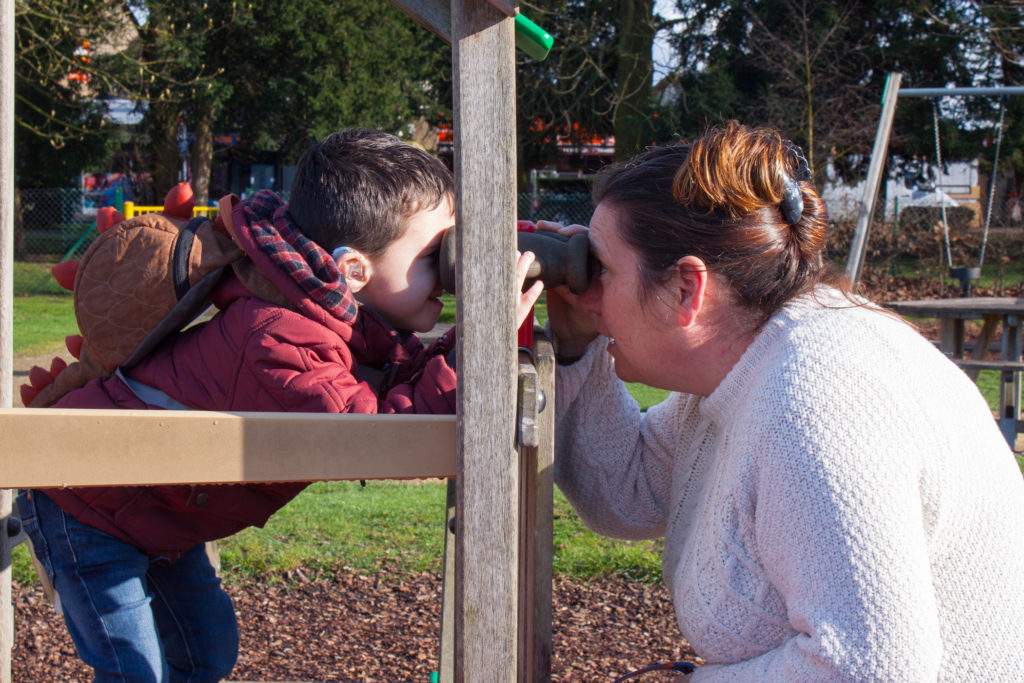The social model of disability
We follow a social model of disability. This says that it is aspects of society that cause a person’s inability to do certain things, not their physical or learning impairment.
For example, a shop front without an access ramp might disabled someone. A child might be disabled by not having access to communication systems like sign language or Makaton.
The social model of disability is important to us because it represents a consensus, among disabled people, on the way they wish to describe themselves.
The social model evolved in opposition to the medical model of disability. This sees physical or learning impairment as the cause of disability. According to this view, an impairment is something to be fixed – and when it can’t be, the disability is something a person has to make the best of.
We think the social model is a better way to a society that includes all people equally, regardless of any impairment. The solution is to rid society of the barriers that make people disabled and unable to participate fully in society. That’s why everything we do aims to help disabled children and their families reach their full potential.
Rights and legislation around disability
The UN Convention on the Rights of Persons with Disabilities guarantees disabled people the same rights to be included in society as anybody else.
The Equality Act 2010 protects disabled people from discrimination, particularly in employment, education and access to services and property.
Our approach involves helping families with disabled children understand their rights to services and support. When we think that legislation doesn’t do enough to break down barriers that disabled children, we campaign for change.
Disability and language
Families with disabled children often face negative attitudes that prevent them leading ordinary lives. For example, our research on Disability Living Allowance (DLA) eligibility found that many families experience stigma around claiming benefits.
We:
- Aim to promote a positive image of disabled children and their families.
- Strive to increase awareness of disability among the wider public.
- Try to use consistent and progressive language to describe disabled people in the way they would like people to describe them.
- Recognise that some people are more familiar and comfortable with other terms.
What we don’t do:
- We avoid old-fashioned terms, such as handicapped or (ab)normal, that emphasise the disability and suggest disabled children are special.
- We don’t say “the disabled”, “the deaf” or any other term that treats disabled people as a group and ignores their individuality.
- We won’t use terms that imply pity, such as “suffers from”, “is a victim of” or “wheelchair-bound”.
- We don’t put the disability before the person, for example, by saying “hemiplegic Sarah Smith”.
Here’s what we do instead:
- We use the term “disabled children”, because we believe that these children are “disabled” by aspects of society. We don’t say “children with disabilities”, which suggests disability is an attribute someone possesses.
- However, if referring to specific education issues, we might use terms like “children with SEN(D)”, which stands for special educational needs (and disabilities), and the equivalent terms across the UK nations. These have precise legal meanings.
- And when talking about specific conditions, we use terms such as “children with Down syndrome” or “children who are deaf and without speech”. We say “autistic children” because most autistic people see being autistic as integral to who they are, not something they “have”.
- We use terms such as “uses a wheelchair”, “has a diagnosis of” or “has epilepsy”.
- We put the person before the disability and say “Sarah Smith, who has hemiplegia”.
- When we use terms we wouldn’t use in other contexts – such as “disorder” rather than “condition” – we only do so when there is a precise legal, medical or other formal definition we want to communicate accurately.
Find out more about our work to tackle disability discrimination.
